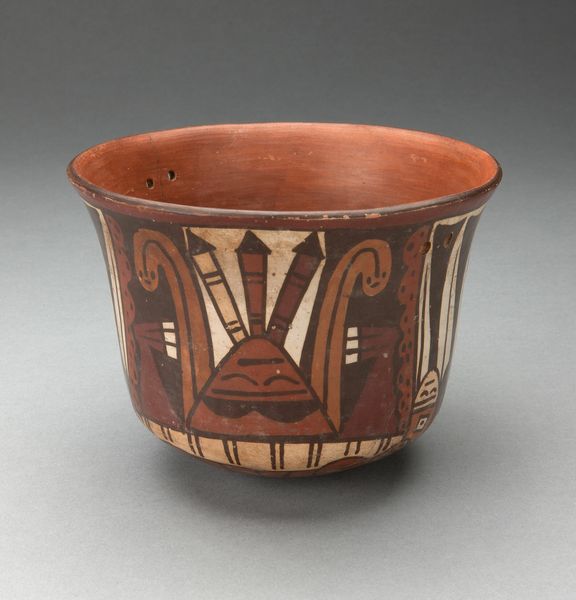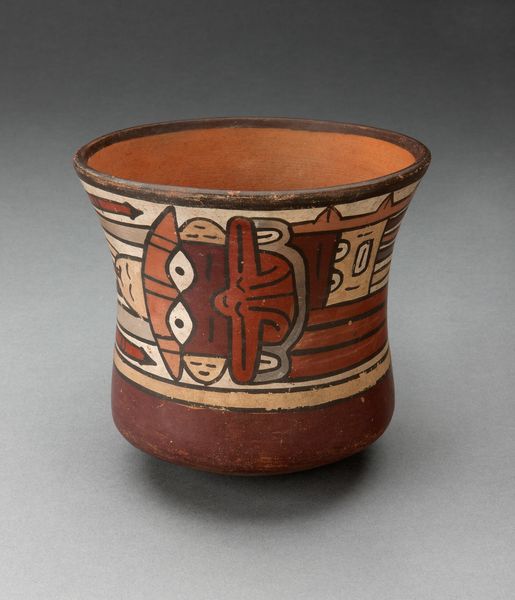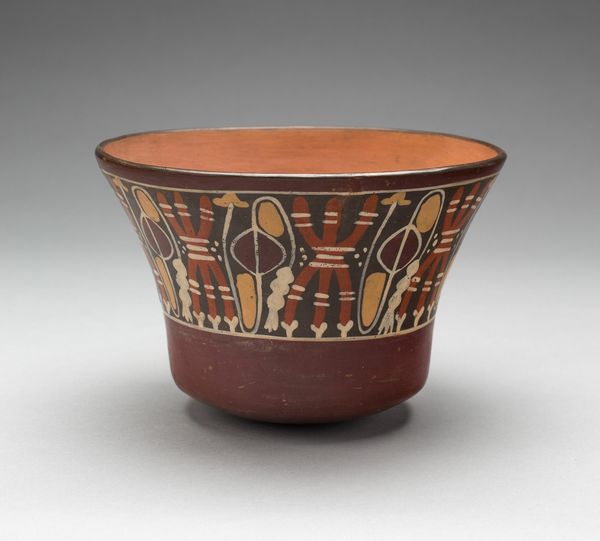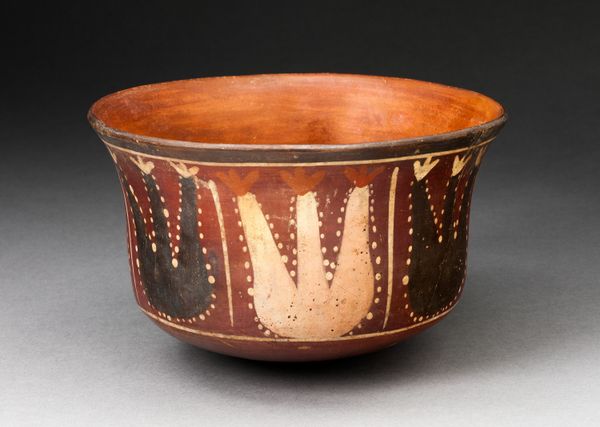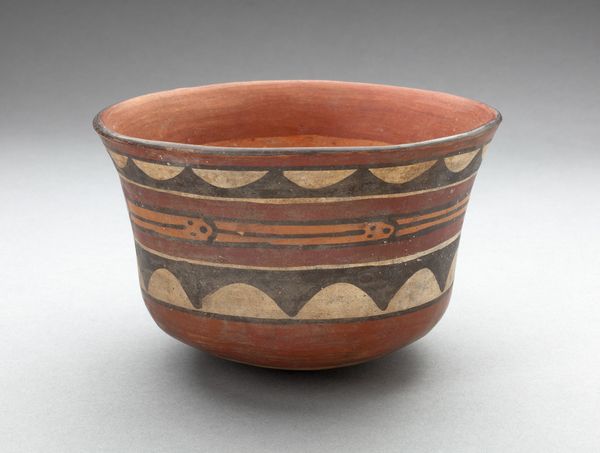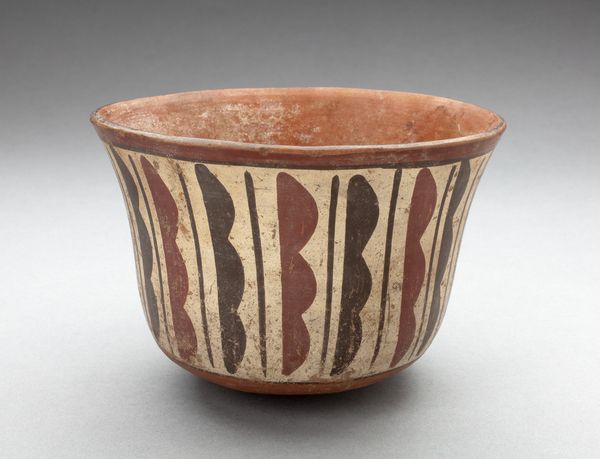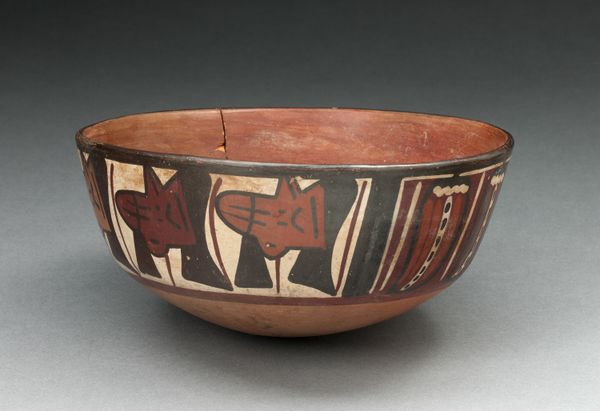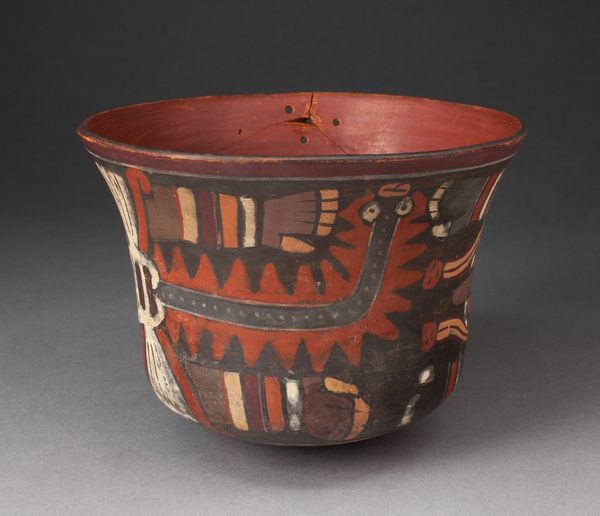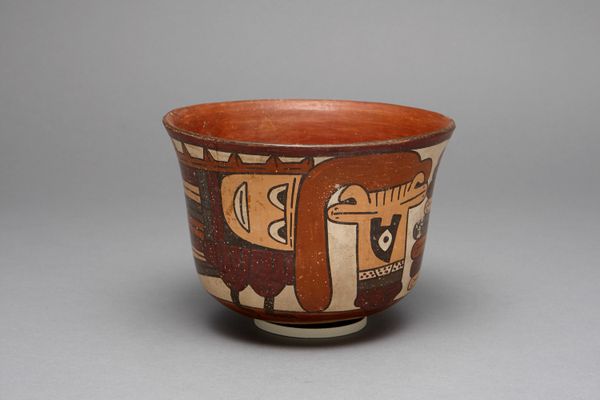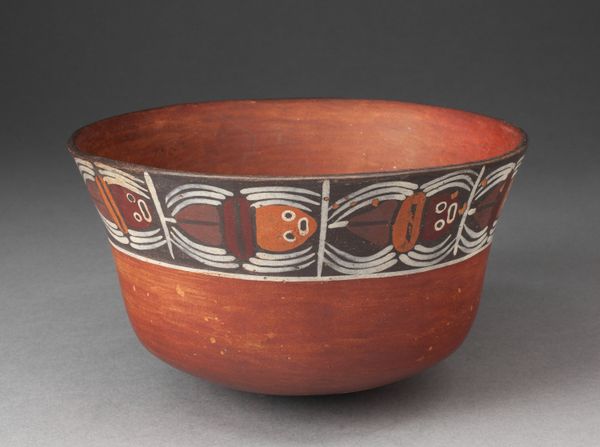
ceramic
#
ceramic
#
figuration
#
ceramic
#
indigenous-americas
Dimensions: 9.8 × 14.9 cm (3 7/8 × 5 7/8 in.)
Copyright: Public Domain
Editor: Here we have a ceramic cup, "Cup Depicting Lobster or Crawfish," created sometime between 180 and 500 by an artist from the Nazca culture. The drawings on the dark-brown surface make me think of a stylized, almost abstracted representation of the sea creature. What's your read on this work? Curator: Its form is elegantly simple, isn't it? Note how the artist uses contrasting light and dark pigments to delineate the central motif—likely, as you mentioned, a lobster or crawfish—but it’s also essential to recognize how the shapes and figures play off of one another, not merely their mimetic correspondence to the outside world. Editor: So, you're suggesting it's less about accurate representation and more about... the formal relationships? Curator: Precisely. Consider the geometric nature of the crustacean's body compared with the flowing, organic forms representing what we might interpret as its legs. It’s about how the artist is balancing the composition across the surface. The choice of colors enhances this tension, and this balance. What do you think of that balance? Does the colour support it, challenge it? Editor: The earthy tones feel grounding. They create this contained visual experience. But the geometric body disrupts it. Curator: A very astute observation. Indeed, we could analyze it further, thinking, for example, of the use of a repeated, nearly rhythmic patterning. Note how those forms contribute to our reading. Editor: So by looking at those individual parts, the colours, shapes, and composition, we can learn much more than identifying its cultural history. Thank you for clarifying, I appreciate the lesson! Curator: A pleasure, it serves as a powerful example of how to see deeply into an artifact, even when detached from explicit context.
Comments
No comments
Be the first to comment and join the conversation on the ultimate creative platform.
